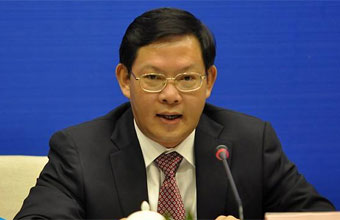Home> Innovation
Guangdong Ocean University
The university has excellent teaching and scientific research platforms, including a national demonstration center of experimental teaching of fisheries science and technology, a national research and development center of shellfish processing technology (Zhanjiang), a research center of pearl culture and processing engineering technology, a provincial key lab for pathogeny biology and epidemiology of aquatic economic animals, a provincial key lab for aquatic product processing and security, a provincial key lab for marine changes and disaster warnings, a provincial ocean development and research center, a study base of Leizhou culture, a provincial center for assessment and consultancy of local legislation, a research center of the marine culture industry (co-built by the Center and the State Oceanic Administration), and a provincial study base for humanities and social sciences – the research center of marine economy and management.
The university is well equipped with teaching facilities, including teaching buildings, science buildings, a library, a gym, a museum, student apartments, canteens, as well as featuring an ocean plaza, a culture plaza, a playground and a standard swimming pool.
The overall floorage of school buildings is 658,900 square meters. The library comprises about 2.56 million volumes (including 800,000 e-books). The equipment for teaching and scientific research is worth 275 million yuan ($44 million), and its fixed asset value reaches 1.24 billion yuan. In addition, an extensive and convenient campus network has been constructed.
The university has made great achievements in cultivating talented people. In the past 79 years, 100,000 students received education here, including Chen Hongze, New China’s first ocean-going captain; Zhong Lin, founder of artificial breeding of the four major types of Chinese carp; Xie Shaohe, a pearl magnate; Li Zhuojia, chief scientist of the Chinese Academy of Fishery Sciences’ South China Sea Fisheries Research Institute; and Wang Yunxin, a pioneer of artificial breeding of groupers in China.
The university has made great strides in scientific research, and its social service capacity has been strengthened. It has undertaken 1,744 scientific research projects of the national “973” and “863” programs, national sci-tech support plan, Natural Sciences Foundation of China and National Social Science Fund, of which 124 are national projects and 331 are provincial projects. Its scientific research fund has reached 316 million yuan. The university has won 78 various science and technology awards, including one national second prize, three provincial first prizes, and 20 provincial second and third prizes.
The university has carried out exchanges and cooperation with more than 30 institutes of higher learning and research organs from the US, Japan, the UK, Australia, and China’s Hong Kong and Taiwan. It has also conducted cooperation in talent cultivation and scientific research with many enterprises and public institutions, government sectors and military units.

 Print
Print Mail
Mail 5G construction supports Zhanjiang's high-quality development
5G construction supports Zhanjiang's high-quality development
 Acting mayor inspects project construction in Xuwen, Leizhou
Acting mayor inspects project construction in Xuwen, Leizhou Zhanjiang island an "egret paradise"
Zhanjiang island an "egret paradise"  Dancing egrets add vitality to Xiashan
Dancing egrets add vitality to Xiashan